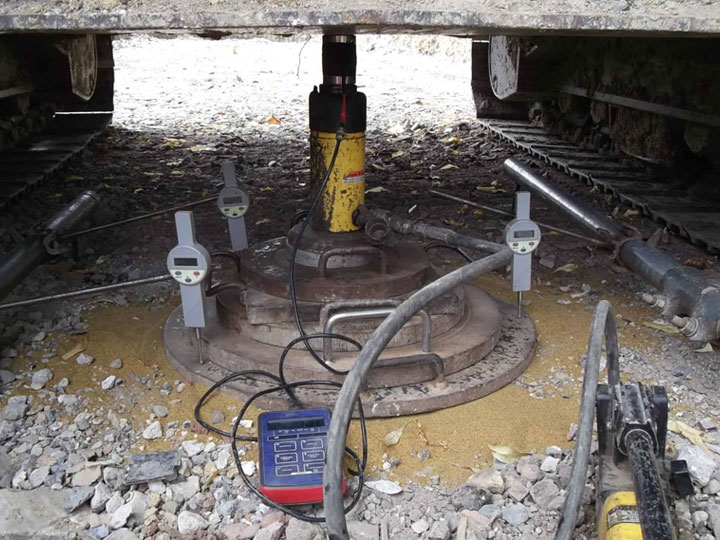Testing the strength of the soil is extremely important in case of any kind of construction before the structure even gets designed. Without knowing the soil's load bearing capacity, you cannot put load on it on a guess - it may cause devastating structural failures. So, today we will talk about one of the best ways to determine the soil strength on site, namely the plate load test.
The method of conducting a test on site to estimate the ultimate load bearing capacity of the soil on site by determining the settlement under a given load is called a Plate Load Test. This is performed on soil that is assumed or tested to be having an uniform kind of strata down to a reasonable depth in regard to the influence of stress. That can be verified by a boring or sounding test.
The following equipments and materials are needed to perform a plate load test:
A loading platform is made and fixed on top of the column that is made above the steel plates. This platform is meant to hold the test load. We will place the load we mean to test with on this platform. That is, now place the 1900 bags of sand each weighing 35 kg, totaling to 60 tonnes, on top of this platform, incrementally.
| LOAD | TIME (min) | G1(mm) | G2(mm) |
|---|---|---|---|
| 5 tones | 1 | 5.28 | 3.7 |
| 2.15 | 5.3 | 3.73 | |
| 4 | 5.1 | 3.73 | |
| 6.25 | 5.31 | 3.74 | |
| 9 | 5.31 | 3.75 | |
| 16 | 5.23 | 3.75 | |
| 25 | 5.36 | 3.79 |
| LOAD | TIME (min) | G1(mm) | G2(mm) |
|---|---|---|---|
| 10 tones | 1 | 4.12 | 2.5 |
| 2.15 | 4.21 | 2.52 | |
| 4 | 4.24 | 2.55 | |
| 6.25 | 4.3 | 2.55 | |
| 9 | 4.37 | 2.567 | |
| 16 | 4.37 | 2.57 | |
| 25 | 4.38 | 2.56 |
This sort of results should go on for all the way up to 60 tonnes, we have only provided a couple of steps for example. When analyzed, we can figure out that the soil in this case has net allowable bearing capacity for design of shallow foundations may be considered as 25t/? with minimum depth of foundation at 3.0 m with respect to the existing ground levels. So the gross bearing capacity of the may be considered 30 t/?.
Plate load test is great for figuring out the soil's capability of taking the weight of the structure! It provides data that enlightens the engineers about not only the shear failure of the soil on site, but also the settlement rate of the soil which are both extremely important about constructing a building there.
It is also good in the sense that the plate load test doesn't require any soil sample extraction, so it is a mostly clean process. It is also a relatively quick test. The loading test is done under conditions that are mostly similar to what would happen in reality, so the test results show a pretty clear idea of what would happen when the actual structure is erected in the scene.
